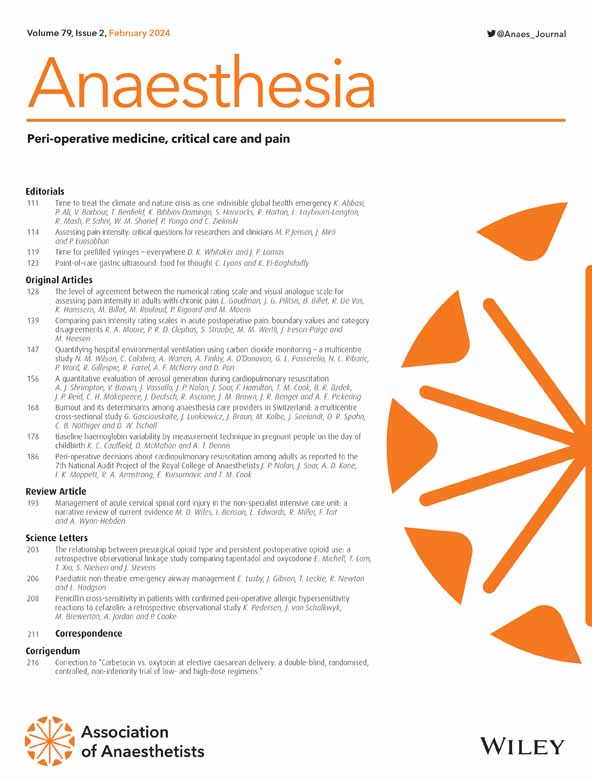重症监护室谵妄护理的障碍和促进因素:由理论领域框架提供的分析。
IF 6.9
1区 医学
Q1 ANESTHESIOLOGY
引用次数: 0
摘要
谵妄常见于危重患者,并与死亡率增加和长期认知障碍相关。本研究的目的是探讨使用现有ICU谵妄识别工具和实施护理方案的障碍和促进因素。方法对在英国国民健康保险制度icu工作的医疗保健专业人员进行半结构化访谈。有目的的抽样被用来招募不同范围的参与者来解释职业;谵妄识别工具或护理包的使用状况;单位大小;和英国的位置。使用理论领域框架进行了专题分析。结果对来自20家医院的21名ICU医护人员进行了访谈。参与者包括咨询师(n = 9);护士(n = 8);高级重症监护医师(n = 2);联合医疗专业人员(n = 2)。有效的谵妄护理出现了五大障碍:缺乏优先级;缺乏结构化的ICU谵妄护理方案;由于物理空间限制和/或缺乏资源而无法实施干预措施;失去经验丰富的工作人员;ICU护理文化的变化。促成因素包括有明确的协议;继续对员工进行培训;提高意识;谵妄冠军;icu后随访门诊;家庭参与;有效的沟通;使用数字提示作为强制性电子文档的组成部分。虽然ICU谵妄被临床工作人员认为是一个重要的问题,但管理往往受到制度和文化障碍的阻碍。医疗保健专业人员强调,需要以协议为导向的护理,加强培训和认识,并将家庭纳入护理过程。这些发现将为设计多组分护理包以改善ICU的谵妄护理提供信息。本文章由计算机程序翻译,如有差异,请以英文原文为准。
Barriers and facilitators to the delivery of delirium care in intensive care units: an analysis informed by the Theoretical Domains Framework.
INTRODUCTION
Delirium is common in patients who are critically ill and associated with increased mortality and long-term cognitive impairment. The objective of this study was to explore the barriers and facilitators to the use of existing ICU delirium identification tools and implementation of care protocols.
METHODS
Semi-structured interviews were conducted with healthcare professionals working in UK NHS ICUs. Purposive sampling was utilised to recruit a diverse range of participants to account for profession; user status of delirium identification tools or care packages; size of unit; and UK location. Thematic analysis was undertaken using the Theoretical Domains Framework.
RESULTS
Twenty-one ICU healthcare professionals were interviewed from 20 hospitals. Participants included consultants (n = 9); nurses (n = 8); advanced critical care practitioners (n = 2); and allied health professionals (n = 2). Five major barriers to effective delirium care emerged: lack of prioritisation; lack of structured ICU delirium care protocols; inability to implement interventions due to physical space constraints and/or lack of resources; loss of experienced staff; and changes in ICU nursing culture. Facilitators included the presence of clear protocols; continued staff training; increased awareness; delirium champions; post-ICU follow-up clinics; family engagement; effective communication; and the use of digital prompts as a component of mandatory electronic documentation.
DISCUSSION
Although ICU delirium is acknowledged as being important by clinical staff, management is often hindered by systemic and cultural barriers. Healthcare professionals highlighted the need for protocol-driven care, enhanced training and awareness, and the inclusion of families in care processes. These findings will inform the design of a multicomponent care package to improve delirium care in the ICU.
求助全文
通过发布文献求助,成功后即可免费获取论文全文。
去求助
来源期刊

Anaesthesia
医学-麻醉学
CiteScore
21.20
自引率
9.30%
发文量
300
审稿时长
6 months
期刊介绍:
The official journal of the Association of Anaesthetists is Anaesthesia. It is a comprehensive international publication that covers a wide range of topics. The journal focuses on general and regional anaesthesia, as well as intensive care and pain therapy. It includes original articles that have undergone peer review, covering all aspects of these fields, including research on equipment.
 求助内容:
求助内容: 应助结果提醒方式:
应助结果提醒方式:


